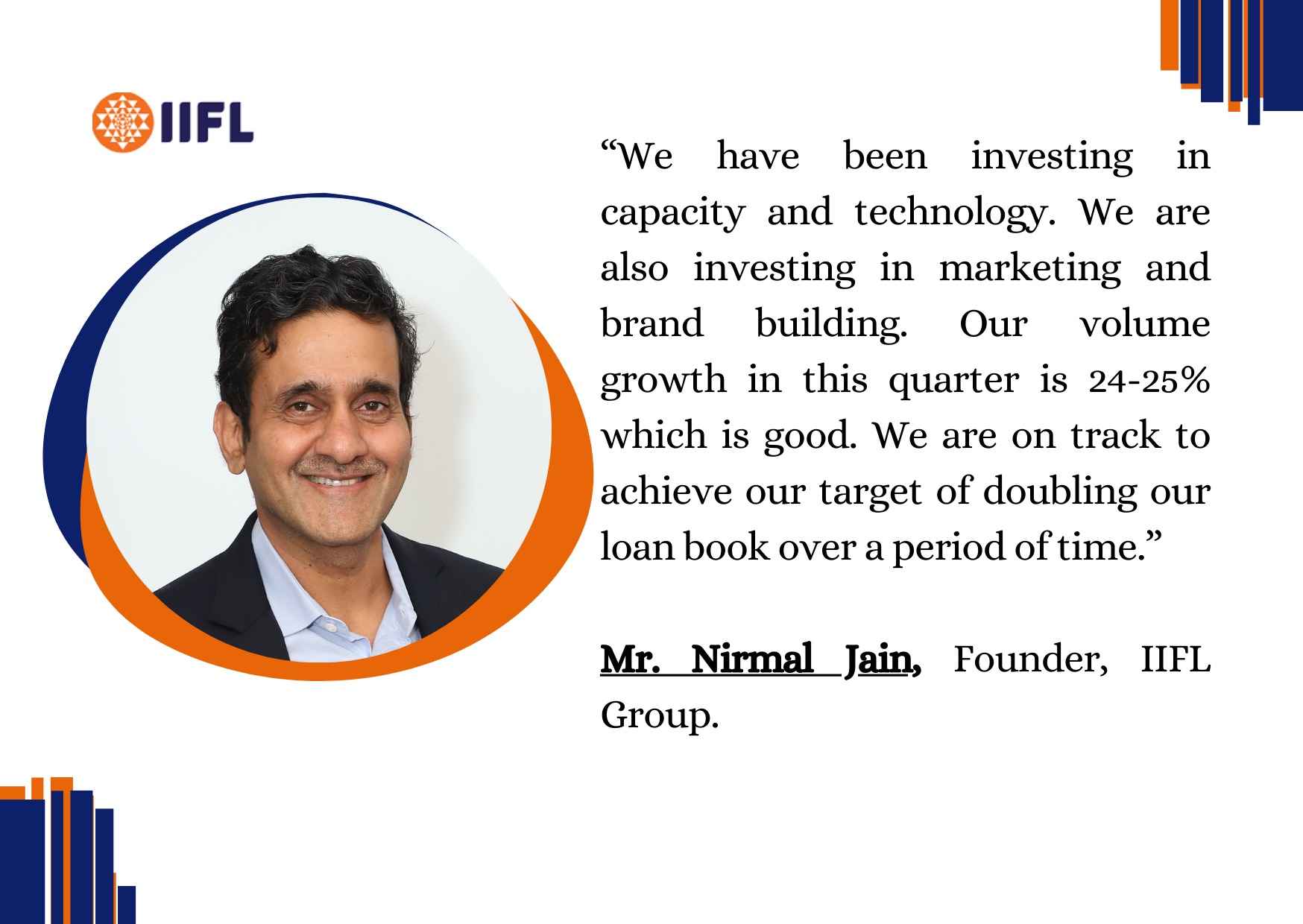Mr. Nirmal Jain Decodes IIFL Growth And The Outlook Ahead
Demand momentum is pretty strong, and credit demand is picking up and showing positive traction in all our core businesses – gold loan, home loan as well as microfinance. In gold loans, the second half of last financial year saw significant or heightened competition on the rate. There is a kind of a rate war and some of the new start-ups and some of the players started offering unrealistic rates for gold loans like 54 or 49 paisa which is 6% per annum and for most of these players, the cost of funds is higher than that.
They were relying on customers to default and then increasing the rate but those kinds of competitive pressure are seeing easing now. Most players are now getting back to rational pricing. The boarding rate has improved in this quarter. The yield for the next two-three quarters will further improve and that is a positive trend.
In terms of volume growth, the first quarter was relatively slack. But going by historical trends, we should see volume growth picking up in the second half of the financial year and maybe from the second quarter as well.
You have seen a growth of about 24% on a year-on-year basis. Could you help us understand what exactly contributed to this growth and also what is the outlook going ahead?
Our net interest income has grown more or less in line with our volumes of the total loan book. Our core loan book has grown by 26% and the non-core, which is a smaller portfolio, has gone down by 15%. But on the whole, our loan book also has grown by around 24%. The net interest income has also moved up at the same pace. What it means is that our net interest margins have remained stable and as the volume grows, our net interest income is growing in tandem.
In the interest rate scenario that we are currently in, we have seen numerous rate hikes already and that has been passed on. How do you plan to achieve your goal of lowering the cost of capital?
Our cost of funds in the first quarter of this financial year has gone down by 10 bps. It would have gone down more if the rate of interest had not gone up. But interest rates are expected to go up a little bit further. Our credit rating or assessments by banks should improve because we have had good financial results and a good track record.
Also, if you recollect, ADIA which is this Abu Dhabi Investment Authorities subsidiary company is making an investment of Rs 2,200 crore in the group and that will bolster our equity and the net worth of the group as well. That should also help us improve our credit rating. So credit rating improvement by credit rating agencies is one but as most lenders also do their analysis, they should have more comfort in giving loans to us at a better rate.
But if there is a steep increase in the environment or the interest rate, then we might also see the cost of funds going up. Whenever we see we will bring down the cost of funds, it is always relative. So, relative to our peers, we should be able to bring it down.
You had guided for doubling your loan book in the next three years. Is the company on track for that and also what could be the lateral impact on the cost-to-income ratios?
The company has been expanding its network, and we have been hiring people. Also, in the last quarter, our brand’s net worth further grew, and we added another 2,000 people. Our manpower stand now has crossed the 30,000 mark in this quarter. We have been investing in capacity and technology. We are also investing in marketing and brand building. Our volume growth in this quarter is 24-25% which is good. We are on track to achieve our target over some time.
You have managed to substantially reduce the GNPA as well as NPAs. The target is to bring it down to below 2% for GNPA and 1% for net NPA with cash flows improving at the bottom of the pyramid. Does this bode well for your target?
Our asset quality has improved significantly. The RBI has now become very strict about NPA recognition through the one circular that became effective last quarter. Although there is some dispensation given, most of the companies have followed that. Now based on that, our GNPA has come down from 3.2% in March to 2.6%. I am talking about the consolidated IIFL Finance this quarter and our long-term or medium-term target are to bring it below 2%. Our net NPA is now around 1.5%, which is also down from 1.8% in the quarter, and our target is to bring it to 1% over the next two-three years.
So we are on track, and our asset quality would be significantly better than our peers we have continued to focus on that by way of very strong underwriting standards as well as a very efficient correction process. Credit selection is important, but we have systems and processes built over the last 15 years. They have stood in good stead as we are very confident about maintaining our asset quality at a superior level.





